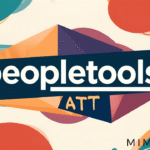7 Things Most Gamers Have in Common

People still think gamers are just teenagers locked in their bedrooms munching on crisps. That stereotype died years ago, yet it keeps coming back. Gaming has become one of the most diverse and widespread activities on the planet, bringing together people who’d never meet otherwise.
From casual mobile players to hardcore esports competitors, gamers share more common ground than expected. For instance, many players enjoy testing their luck beyond traditional games, choosing to play without UKGC limits at international platforms that offer more flexibility than UK-regulated sites. Whether conquering a raid boss or spinning reels for big wins, strategic gameplay connects these communities.
After digging through research and player surveys, these seven traits keep showing up across every type of gamer.
Most Gamers Are Actually Adults
Forget everything you think you know about the average gamer age. Approximately 80% of gamers are over the age of 18, accounting for approximately 2.47 billion adult players worldwide.
Players who grew up with the original Nintendo and PlayStation consoles are now in their 30s and 40s. They didn’t stop gaming when they got older; they just adapted their habits around work, families, and other responsibilities.
Gaming Brings All Genders Together
The old “boys only” gaming club doesn’t exist anymore. Male gamers still outnumber females slightly at around 55% in the US, but that gap shrinks every year. The global numbers show 1.7 billion male players against 1.39 billion female players.
Among teens, boys and girls play games in nearly equal numbers now, though boys are more likely to identify themselves as “gamers” publicly. This gender balance varies by game type, but those lines are blurring as developers create more inclusive experiences.
Social Connection Drives Gaming
Gaming stopped being a solo activity years ago. Among US teens, 72% say they play games to spend time with other people, and 89% of teen players game with others regularly. Nearly half have made genuine friendships through online gaming.
Massive multiplayer games create communities that rival traditional social clubs. Players organise into guilds and clans that often become tight-knit groups. Many online friendships transition into real-world relationships, with gamers meeting up at conventions or even becoming roommates.
Gamers Share Similar Personality Types
Psychology research has identified distinct gamer personality profiles. The largest group consists of “Masterminds” at 45%, followed by “Seekers” at 23%. These players tend to be strategic thinkers who enjoy complex problem-solving and long-term planning.
Another significant group shows high emotional regulation and secure attachment styles. These gamers manage stress well and use platforms like Discord and Twitch to build meaningful social connections. They’re not the isolated antisocial stereotypes that the media often portrays.
Real-World Skills Transfer From Games
Gaming doubles as serious skill training without players realising it. In the study performed at Universidad de Murcia in Spain, 94% of adult gamers reported that gaming improved their logic, teamwork, or English language abilities. A 20-year US study tracked how gamers applied these skills in their professional lives.
Problem-solving abilities, confidence under pressure, and leadership skills frequently transferred from virtual environments to workplace situations. Players who watch competitive matches or create content also show measurable improvements in their own gameplay strategies.
Free-to-Play Dominates Spending Habits
The gaming economy has completely flipped in recent years. In the US, 82% of gamers made in-game purchases in 2023, but most weren’t traditional game sales. Free-to-play titles with optional purchases have become the dominant model.
Younger demographics (13-34) drive customisation spending heavily. About 62% created personalised avatars, and 56% actively chatted while gaming. Live-streaming platforms like Twitch create communities around specific titles, and viewer-streamer relationships influence purchasing decisions.
Gaming Creates Its Own Culture
“Cozy gaming” represents one of the fastest-growing trends in recent years. Titles like Stardew Valley and Animal Crossing emphasise relaxation and creativity over competition. This genre has attracted approximately 7.6% more players since 2022, particularly among older adults and women.
These cultural shifts reflect gaming’s maturation as a medium. Different genres serve different emotional needs, from intense competitive experiences to peaceful creative outlets. Gaming communities have developed their own languages and traditions that transcend geographic boundaries.
What This All Means?
Gaming has evolved far beyond its humble arcade origins. Today’s gamers represent every age group, gender, and background imaginable. They’re building real friendships, developing valuable skills, and creating cultural movements that influence entertainment worldwide.
The next time someone dismisses gaming as a teenage phase, remember these numbers. With billions of adult players using games for social connection and skill development, gaming has become as mainstream as watching films. The question isn’t whether gaming matters anymore; it’s how the world will adapt to this reality.





